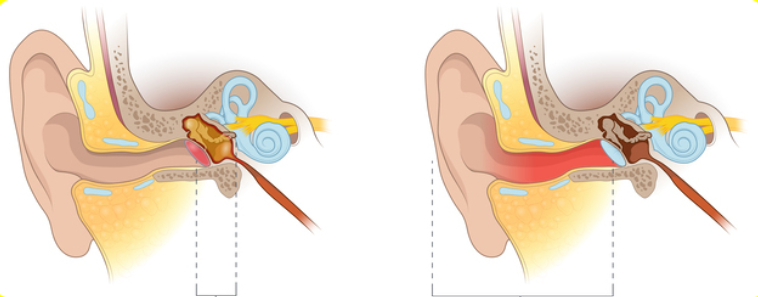Are you finding your ear to be itchy ever since you took a bath in that pool? Are you finding your little one tugging on their ear since last week? Or is your mother complaining of ear pain and feeling dizzy? These are all common signs of ear infections. Different ear infection types have varying symptoms and affect people in various ways. These symptoms need proper care, especially under the guidance of an ENT specialist.
Causes of ear infections you should know before contacting an ENT specialist.
Ear infections occur due to viruses or bacteria that get entrapped in your ear. Over time, these trapped germs can develop into an ear infection. These germs frequently come from other diseases that can swell and congest your nasal passages and throat. Hence, ear infection symptoms can show up almost a week after the onset of an upper respiratory infection. But these infections can also come from water that you go swimming or bathe in.
An ear infection frequently starts with a cold, flu, or allergic response. These augment mucus in the sinuses and result in the slow clearance of fluid. The initial illness will also arouse the throat, nasal passages, and eustachian tubes.
Common types of Ear Infections
Ear Infections can be of three categories
- Otitis media with effusion (OME)
Post an ear infection, there might be some fluid left at the back of the eardrum. A person with OME may not experience symptoms, but a doctor will be able to find the leftover fluid.
- Chronic otitis media with effusion (COME)
COME refers to fluid frequently returning to the middle ear. This can decrease the ability to fight other germs and hurts hearing ability.
- Acute otitis media (AOM)
AOM is the most common and least severe form of an ear infection. The middle ear becomes contaminated and swollen, and fluid is trapped at the back of the eardrum. It can also cause fever.
FAQ
How to make out if it is a bacterial or viral ear infection?
If anyone in the house is down with pneumonia or strep throat, there is a greater chance that it is bacterial. However, sometimes symptoms are the same in bacterial and viral diseases. One difference is in the case of bacterial infection, the patient can have a high fever. Fevers can also happen with viral infections but chances are less.
If the ear infection vanishes in a week, it is a viral infection. If it does not improve even after a week, it may be a bacterial infection, and you should certainly seek medical treatment from an ENT specialist.
Symptoms of Ear Infections
Common symptoms of Ear Infections
In adults, the symptoms are easy. Adults usually suffer from ear pain and pressure, fluid in the ear, and reduced hearing. Children experience a wider range of signs. These comprise:
- ear pain, especially when lying down
- tugging or pulling at the ear
- difficulty sleeping
- loss of balance
- crying more than normal
- fever
- difficulty hearing
- headache
- lack of appetite
If any of these symptoms persist, get in touch with an ENT specialist.
Treatment
Treatment is given depending on the type of ear infection, and in many cases of outer and middle ear infections, antibiotics are given. Some antibiotics are applied directly to the infection place with ear drops or at times are given orally. Pain medications, such as OTC pain relievers and anti-inflammatory medications, can also give relief from the symptoms.
End Note
Although ear infections are common in children and adults, they can still occur. If you suspect that you may have an ear infection, get it checked by an ENT doctor. If you ignore an ear infection and do not consult with the doctor, it may even lead to permanent hearing loss, and that infection spreads to other parts of the head. However, on-time and appropriate treatment can take care of the infection quickly.

